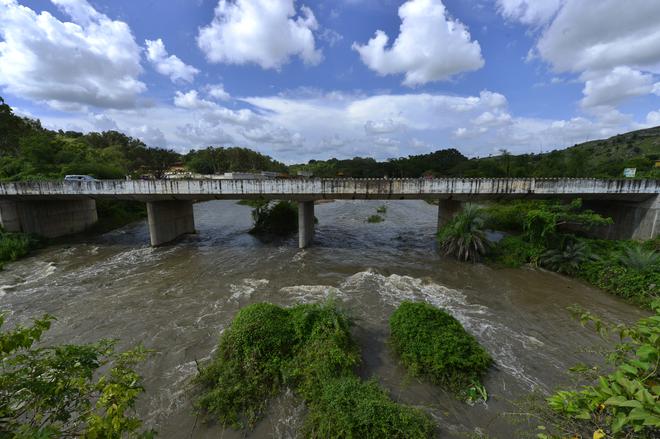
After three decades, the crest gates of the Thippagondanahalli (T.G.Halli) reservoir were opened to let water out on Tuesday, as the southwest monsoon continued to be active over the State, wreaking havoc in and around Bengaluru.
Bangalore Water Supply and Sewerage Board (BWSSB) chairman N. Jayaram told The Hindu that four gates had been opened after 30 years to let out 3,000 cusecs of water. Ironically, water from the reservoir has not been supplied to Bengaluru since 15 years, as it was under maintenance. A new project to counter excess pollution in the water will take a few more months, after which water (3.4 MLD capacity) will be supplied to 10% to 15% of the city from T.G. Halli again, he said.
“Four gates have been opened to let out 3,000 cusecs. It was in 1992 that the gates were opened last time. We are letting out water in coordination with the Ramanagaram DC and Irrigation Department officials as Ramanagaram town will be flooded if more is let out,” said Mr. Jayaram.
Due to heavy downpour on Sunday night, drinking water supply for Bengaluru was affected till Wednesday after two pumping stations in T.K. Halli reservoir were flooded.
Thippagondanahalli lake was once the source of piped water for the city. The ₹260-crore project to rejuvenate and revive the reservoir includes setting up of a Sewage Treatment Plant and dredging and cleaning the reservoir, among others.
The water outflow from the reservoir coincided with a bridge connecting Sugganahalli village to Ramanagaram collapsing. PWD officials, who visited the spot, said the bridge was inaugurated in 1983 and would have to be rebuilt now. A large crack was seen on the road leading to the dam, with the police cordoning off the area to prevent the locals from venturing close to the destruction.
The Manchanbele dam too attracted visitors in large numbers as the gushing waters created a spectacle locals say hasn't been seen in at least two decades. Ramanagara DC Avinash Menon Rajendran was seen taking stock of the situation on Tuesday evening.
Constructed in 1933
According to the BWSSB, to keep up with the growth of Bengaluru city when the supply fell short of demand, a new reservoir 'Chamaraja Sagar' near Thippagondanahalli (T.G. halli) was constructed in 1933 across the Arkavathi, downstream of Hessarghatta reservoir about 26 km to the west of Bengaluru. The Water Treatment Plant is situated at the foot of the dam at T.G. halli.
"The first phase of the scheme was completed during March 1933 to augment the then supply by about 28 MLD. Subsequently, the abstraction was increased to 149 MLD by providing additional infrastructure such as increasing the capacity of the dam, providing additional treatment and pumping facility," said the BWSSB website.
The website also mentioned that due to failure of monsoons and constraints in the existing pumping system, only about 117 MLD was available most of the time and supplied to West of Chord Road, Beggars Colony, Kethamaranahalli (KMH), and CJF after implementation of Cauvery Stage III project.







